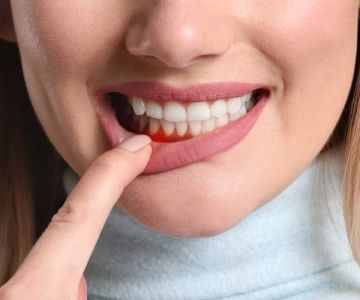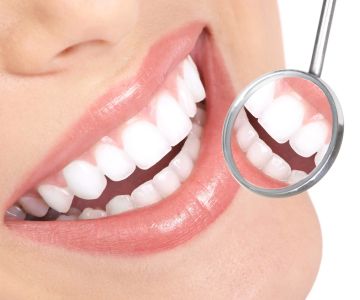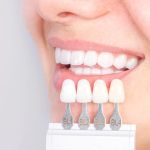What Does It Mean If The Gums Change Color?
Color changes in your gums can be alarming and a potential indicator of underlying health issues. Healthy gums typically have a pink, coral-like hue; any deviation from this color can be a sign of problems ranging from simple irritation to severe infections. Especially for residents in the United States, understanding the implications of purple or red gums is crucial for maintaining overall oral hygiene. In this guide from Dentistry Toothtruth, we explore possible causes, treatments, and preventive measures for gum color changes, emphasizing the importance of addressing such symptoms promptly.
The Anatomy of Healthy Gums
Understanding the anatomy of healthy gums is essential to recognizing potential issues. Typically, healthy gums are firm, pink, and serve as a protective barrier around the teeth to safeguard against bacteria. The transition from pink to red or purple might indicate increased blood flow due to inflammation. This inflammation, medically termed gingivitis, can precede more severe conditions if not addressed timely. According to the American Dental Association, gum inflammation impacts nearly half of the adult population in the U.S., making awareness critical.
Common Causes of Gum Discoloration
There are several factors that can cause gums to change color. One primary cause is periodontal disease, which can lead to gum redness and swelling. Other potential reasons include hormonal changes, medication side effects, and systemic health issues such as diabetes. Furthermore, lifestyle habits such as smoking can contribute to gum discoloration. Studies have shown that smokers are six times more likely to develop gum disease than non-smokers, emphasizing the impact of smoking on oral health.
Symptoms and Diagnosis
Identifying symptoms early can help in distinguishing between normal and problematic gum color changes. Symptoms of concern include persistent redness or purpleness, swelling, bleeding during brushing, and bad breath. A clinical diagnosis typically involves a dental examination and possibly imaging tests to assess bone loss or hidden pockets of infection. Visiting a dentist at Dentistry Toothtruth can help in getting a professional assessment and tailor a suitable treatment plan.
Treatment Options and Remedies
Treatment for discoloration largely depends on the underlying cause. For gum disease, professional cleaning and improved oral hygiene routines are fundamental. Medications or surgeries might be needed for severe cases. Natural remedies such as saltwater rinses and herbal teas can also help in reducing inflammation. Moreover, advancing gum health through regular dental check-ups at facilities like Dentistry Toothtruth is invaluable for preventing gum disease.
Preventive Measures and Lifestyle Changes
Preventing gum color changes involves maintaining excellent oral hygiene practices, which include brushing twice daily, flossing, and using mouthwash. Diet also plays a significant role; foods rich in vitamins and minerals support gum health. Avoiding tobacco and managing stress levels can further reduce the risk of gum inflammation. Regular dental visits for cleaning and check-ups are vital preventive measures, ensuring early detection and management of any oral health issues.
In conclusion, noticing a color change in your gums, such as turning red or purple, can be indicative of various oral health issues. Being proactive in understanding the causes and potential treatments is essential for maintaining healthy gums. Regular dental check-ups, practicing good oral hygiene, and adopting a healthy lifestyle can significantly prevent and manage gum discoloration. At Dentistry Toothtruth, we advocate for timely interventions and a community aware of their oral health needs. If you notice unusual changes in your gum color, consult with a dental professional promptly to safeguard your oral health.







 University of the Pacific, Arthur A. Dugoni School of Dentistry
University of the Pacific, Arthur A. Dugoni School of Dentistry Central Pennsylvania Endodontics, LLC
Central Pennsylvania Endodontics, LLC Sage Dental of Windermere
Sage Dental of Windermere Dr. Maria Regina M. Tan, DDS
Dr. Maria Regina M. Tan, DDS Icon Dental
Icon Dental Dental Solutions of Voorhees
Dental Solutions of Voorhees The Importance of Oral Health Education During Pregnancy for a Healthy Pregnancy
The Importance of Oral Health Education During Pregnancy for a Healthy Pregnancy Why Skipping Dental Checkups Can Lead to Bigger Oral Health Problems
Why Skipping Dental Checkups Can Lead to Bigger Oral Health Problems Advantages of Porcelain Dental Restorations
Advantages of Porcelain Dental Restorations Best Tips for Brushing Your Teeth Properly for Healthy Gums: Essential Techniques for Oral Health
Best Tips for Brushing Your Teeth Properly for Healthy Gums: Essential Techniques for Oral Health How Can Diabetes Cause Tooth and Gum Problems? Preventing and Managing Oral Health Issues
How Can Diabetes Cause Tooth and Gum Problems? Preventing and Managing Oral Health Issues Healthy Habits for Promoting Good Oral Health and Hygiene: Tips for a Healthy Smile
Healthy Habits for Promoting Good Oral Health and Hygiene: Tips for a Healthy Smile